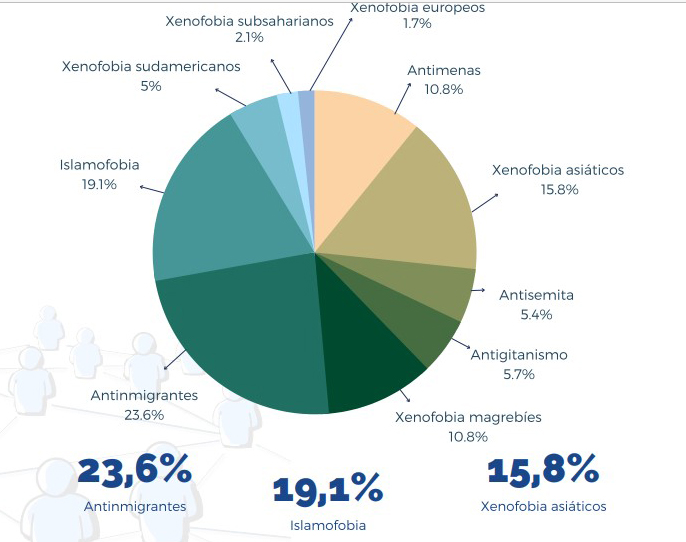The Spanish Observatory on Racism and Xenophobia (OBERAXE, by its acronym in Spanish) has published its quarterly report in hate speech in social media. According to its last report, a 19% of the cases identified target the Muslim population.
In the context of the current pandemic crisis, and after imposing the State of emergency in Spain, the Spanish Observatory on Racism and Xenophobia, linked to the Secretariat of State for Migration, has launched a project for the monitoring of hate speech in social media, through the analysis of YouTube, Twitter, Facebook, Instagram and TikTok platforms.
This analysis is carried out in accordance with the European Commission’s Code of conduct. In this frame, the search “has focused on the cases of hate speech linked with racism, xenophobia, related intolerance, speeches against social inclusion, and those aimed at immigrants”.
An increase in Islamophobic content
23,6% of the cases are aimed against the migrant population, 19,1% against the Muslim population, and 15,8% against the Asian community.
Published on a quarterly basis, the first two reports tackle the months from May to July and August to September. This report, comprising the months of October to December, has identified hate speech cases in 424 virtual contents. Of them, 23,6% of the cases are aimed against the migrant population, 19,1% against the Muslim population, and 15,8% against the Asian community. Both islamophobia and racism against the Asian community has increased significantly in the last three months. Particularly, the last quarterly report shows an increase on islamophobia of 11,4%.
With regards to the digital platforms that register this increase in hate speech, the higher number of cases were found in Facebook (35,6% of the cases), followed by Twitter (35,3%) and YouTube (29%). These numbers show the important challenge faced by these digital platforms in order to monitor and prevent the spreading of hate speech.
Particularly, the last quarterly report shows an increase on islamophobia of 11,4%.
Remarkably, the project does not only focus on the monitoring of hate speech, it also plays an active role on its suppression. All the cases identified were reported to the platforms, benefitting on the Observatory’s status as “trusted flagger” (primary member on these social networks). Facebook withdrew 93,4% of the content reported, Twitter withdrew a 41,5% of its reported content, and YouTube, 38%.
You can read the full report in Oberaxe’s website.
















No Comments